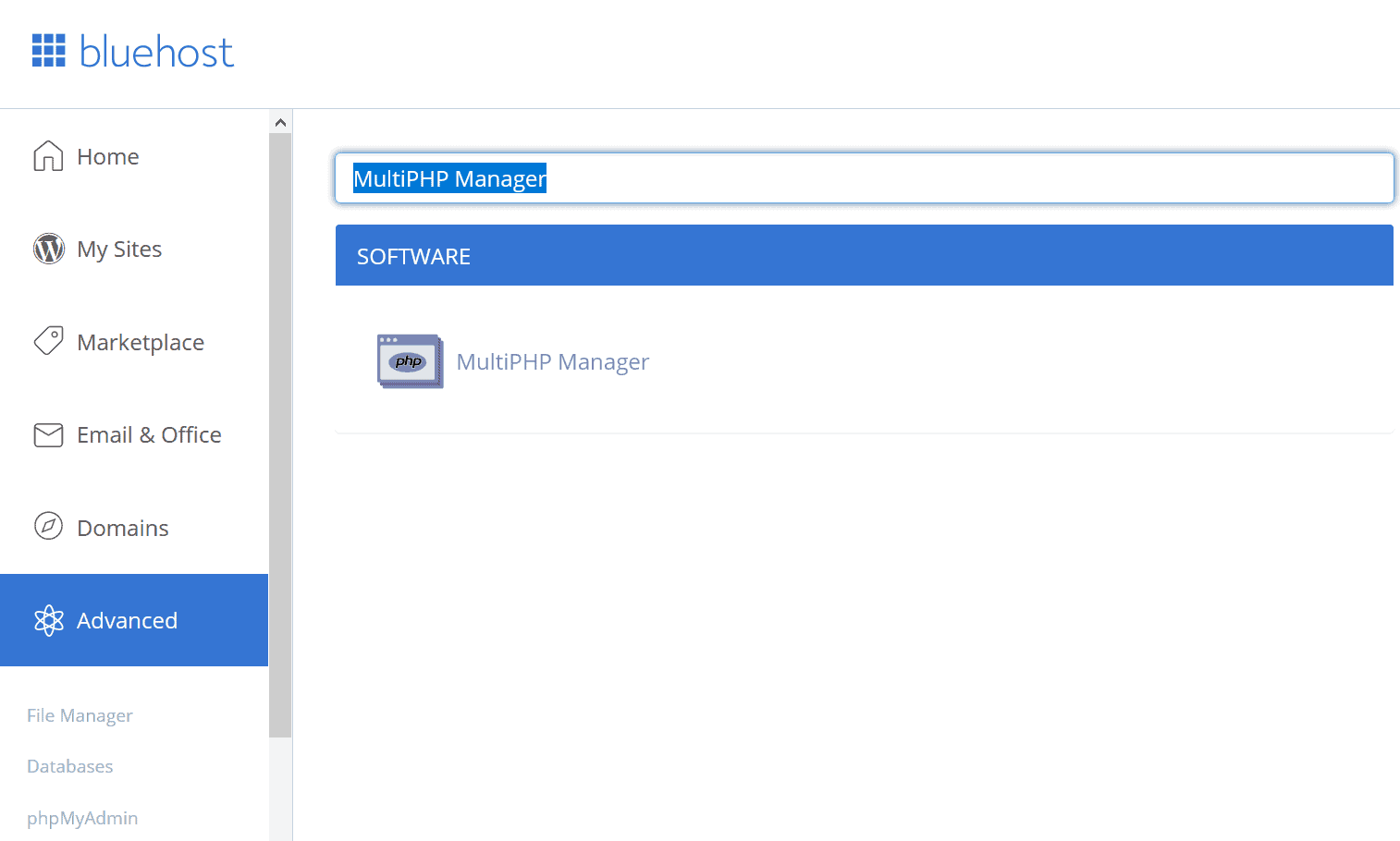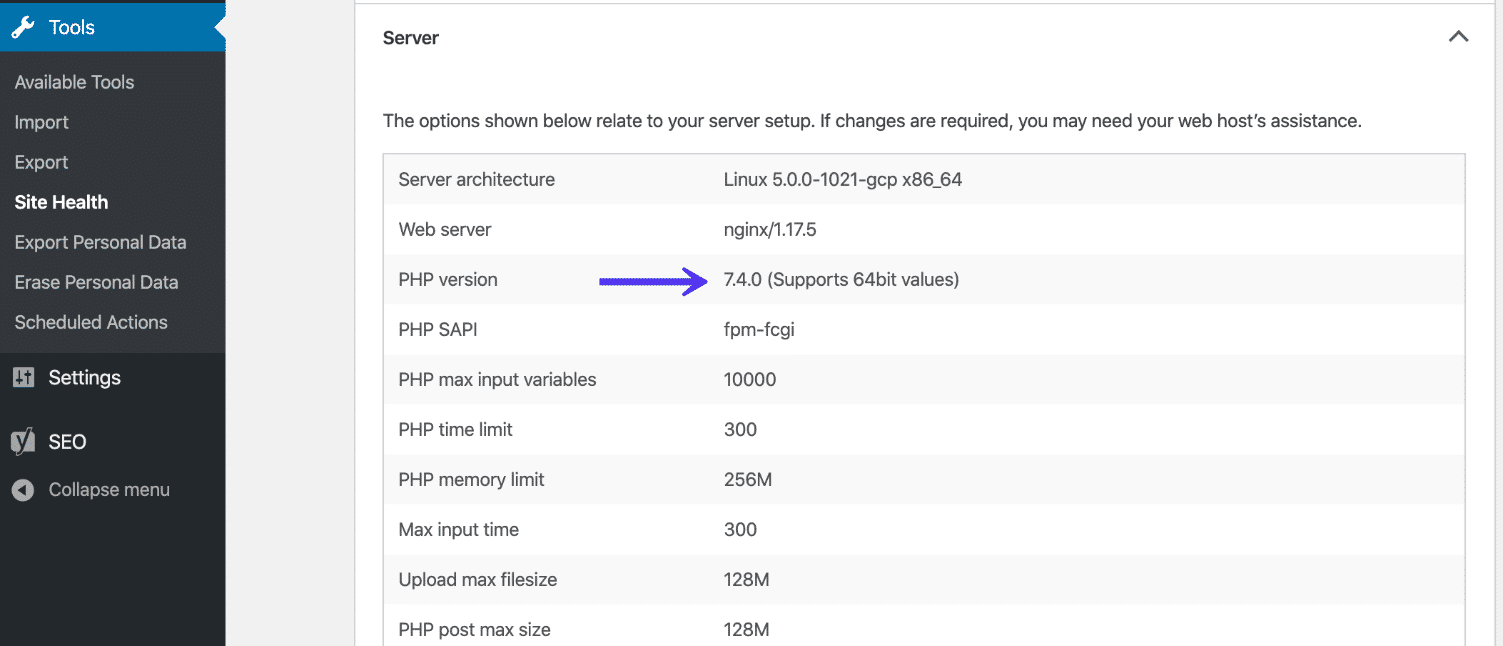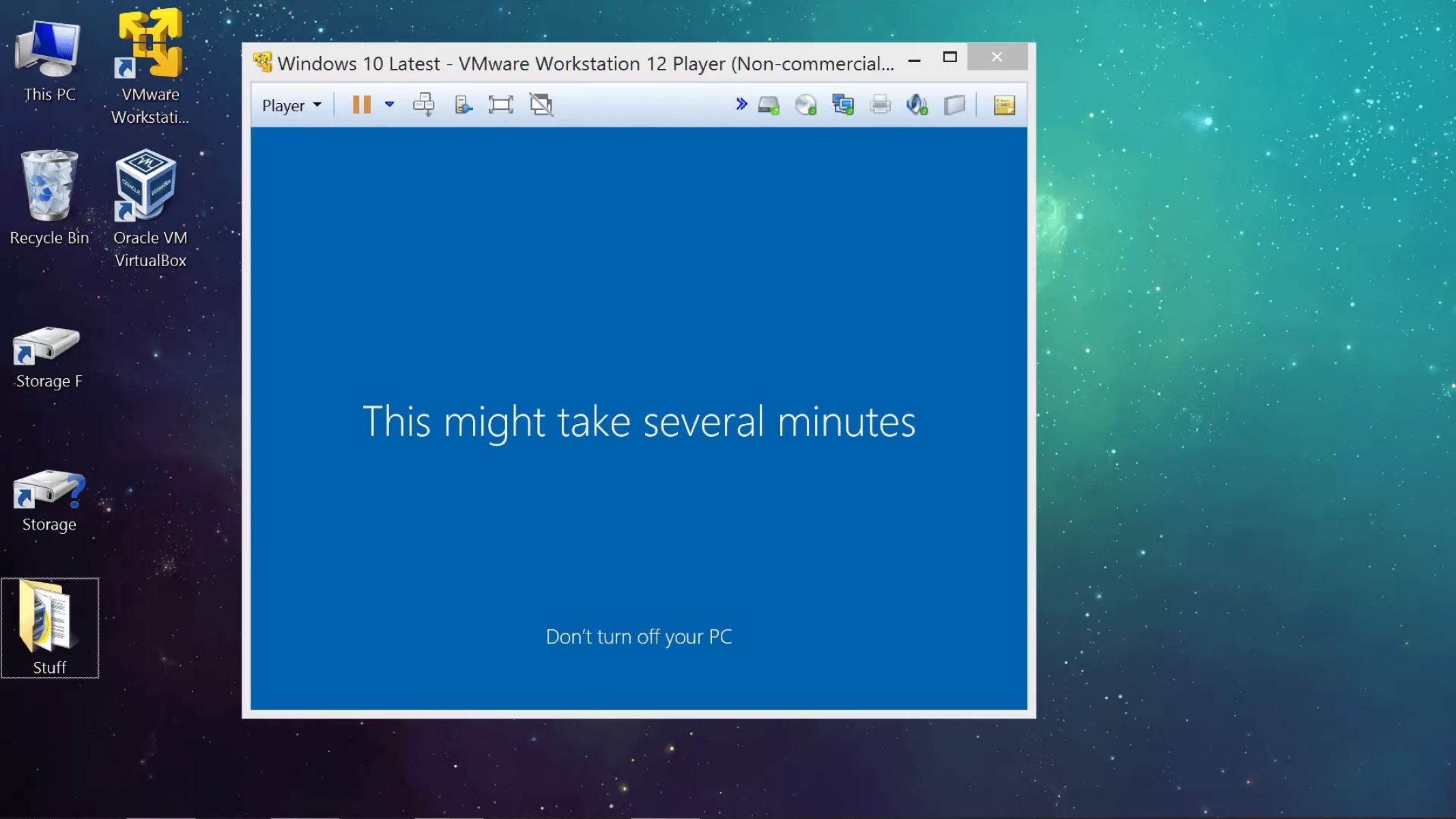Introduction
Switching web hosting providers can be a daunting task, but sometimes it is necessary to find a better and more reliable service. Whether you are looking for better customer support, improved website performance, or more affordable pricing, transferring your website to a new hosting provider can offer a range of benefits.
It is essential to plan and execute the switch carefully to ensure a smooth transition without any downtime or data loss. This step-by-step guide will walk you through the process of switching web hosting providers, allowing you to make the move successfully.
Before you embark on the journey of switching web hosting providers, take some time to evaluate your current web hosting service. Identify the pain points, such as slow loading times, frequent downtime, or inadequate customer support. Understanding the reasons behind your desire to switch will help you find a hosting provider that can address these issues.
Moreover, it’s crucial to assess your website’s requirements and consider any potential future growth. Determine the amount of storage, bandwidth, and server resources needed to ensure that your new hosting provider can accommodate your website’s needs and scale accordingly.
Once you have assessed your reasons for switching and evaluated your website’s requirements, it’s time to start the process of switching web hosting providers. This guide will provide you with a clear roadmap, helping you navigate through each step effectively. By following these steps, you will be able to switch web hosting providers seamlessly, minimizing any disruption to your online presence and ensuring a positive user experience for your visitors.
Step 1: Choose a new web hosting provider
Choosing a reliable and suitable web host is the foundation of a successful website. When selecting a new web hosting provider, there are several factors to consider:
- Uptime reliability: Look for a hosting provider that guarantees high uptime, ensuring that your website remains accessible to visitors at all times.
- Speed and performance: A fast-loading website is crucial for providing a positive user experience. Select a web host that provides robust server infrastructure and optimized performance.
- Scalability: Consider your website’s potential for growth and ensure that the hosting provider offers flexible scalability options, allowing you to upgrade your hosting plan as needed.
- Customer support: Check for reliable and responsive customer support, available 24/7. It is essential to have assistance whenever you encounter technical issues or have questions about your hosting account.
- Security features: Look for a hosting provider that offers robust security measures, including regular backups, SSL certificates, and advanced malware protection, to safeguard your website and data.
- Cost: Evaluate the pricing plans of different hosting providers and consider your budget. However, remember that the cheapest option may not always provide the necessary features and reliability.
Do thorough research and read reviews to assess the reputation and performance of potential hosting providers. Pay close attention to what other users are saying about their experiences to ensure that you make an informed decision.
Once you have narrowed down your choices, compare the features and benefits offered by each hosting provider. Consider your website’s specific requirements, such as the type of website you have (e.g., a blog, e-commerce, or a portfolio site) and the technologies (e.g., WordPress, Drupal, or Magento) you need for its functioning.
Make a list of the hosting providers that meet your criteria and contact their support teams with any questions or concerns you may have. Their responsiveness and willingness to assist can be a good indicator of the level of service you can expect from them.
By carefully evaluating and selecting a new web hosting provider, you can ensure that your website is supported by a reliable and efficient infrastructure, providing a stable and seamless experience for both you and your visitors. Once you have chosen a hosting provider, it’s time to move on to the next step: backing up your website.
Step 2: Backup your website
Before making any changes or transferring your website to a new hosting provider, it is crucial to back up all your website files and databases. This ensures that you have a copy of your website’s data that can be restored if anything goes wrong during the migration process.
There are a few different methods you can use to back up your website:
- Manual backup: One method is to manually download all the files from your current web hosting account. This includes your website’s HTML, CSS, JavaScript, media files, and any other files that make up your website. You should also export a backup of your website’s database, which contains your content, user information, and any other data stored within your site. Keep these files securely stored on your local computer or an external storage device.
- Automatic backup: Many web hosting providers offer automated backup services. Check if your current hosting provider has this option available and enable automatic backups if they do. If not, you can use third-party plugins or services to schedule regular backups of your website.
No matter which method you choose, ensure that your backups are stored in a secure location and regularly updated to capture any changes made to your website content since the last backup.
Backing up your website serves as insurance against potential data loss during the migration process. It provides peace of mind and a safety net in case anything unexpected happens.
In addition to backing up your website files, it’s also important to make note of any custom configurations or settings within your current hosting environment. This includes email accounts, domain settings, and any special server configurations you may have. Having this information on hand will make it easier to recreate those settings on your new hosting account.
Once you have safely and securely backed up your website files and databases, you’re ready to proceed to the next step: transferring your website’s files and database to the new hosting provider.
Step 3: Transfer your website’s files and database
Now that you have a backup of your website, it’s time to transfer your website’s files and database to your new hosting provider. This step ensures that all your website’s content and data are seamlessly migrated to the new server.
Here are the general steps to transfer your website:
- Upload your website files: Connect to your new hosting account using FTP (File Transfer Protocol) or the file manager provided by your hosting provider. Upload all your website files to the appropriate directory on the new server. This usually involves transferring your HTML, CSS, JavaScript, images, and other media files.
- Import your database: If your website uses a database (such as MySQL), you will need to export the database from your old hosting account and import it into your new hosting account. This can typically be done using tools like phpMyAdmin or through the command line.
- Configure your website settings: Once your files and database are transferred, you may need to update certain settings within your website’s configuration files. This could include database connection details, file paths, or any other server-specific configurations. Consult your website’s documentation or contact your website developer for guidance on updating these settings.
- Test your website: Before updating your DNS settings, it’s important to test your website on the new hosting account to ensure everything is functioning correctly. Check for any broken links, missing files, or database connection errors. This step allows you to address any issues before making your website live on the new server.
If you’re not familiar with the technical aspects of transferring your website, it’s recommended to seek assistance from your new hosting provider’s support team. They can guide you through the process and help troubleshoot any problems along the way.
Remember to keep your old hosting account active until you are confident that the transfer is successful. This allows you to revert back to your previous hosting account if needed.
Once you have successfully transferred your website’s files and database, it’s time to proceed to the next step: setting up your email accounts (if applicable).
Step 4: Set up your email accounts (if applicable)
If you have email accounts associated with your domain, you’ll need to set them up on your new hosting provider’s server. This step ensures that your email communication remains uninterrupted during the transition.
Here’s how to set up your email accounts:
- Create new email accounts: Log in to your new hosting account’s control panel and navigate to the section for email management. Create new email accounts with the same usernames and passwords as your previous accounts.
- Configure email clients: If you access your email through an email client like Microsoft Outlook or Apple Mail, you’ll need to update the email account settings to point to the new server. Update the incoming and outgoing mail server addresses, as well as the authentication credentials.
- Transfer existing emails: If you want to transfer existing emails from your old hosting provider to the new server, you can use an email client to do so. Set up both the old and new email accounts in the email client and simply drag and drop the emails from one account to the other.
- Update DNS records: To ensure that incoming emails are routed to the new hosting provider’s server, you’ll need to update your domain’s DNS records. Update the MX (Mail Exchanger) records to point to the new server’s hostname. This step may require accessing your domain registrar’s control panel or contacting their support team for assistance.
- Test email functionality: Once the DNS changes have propagated (which can take up to 48 hours), test the email accounts by sending and receiving test emails. Verify that all emails are being delivered correctly and that there are no issues with sending or receiving messages.
If you encounter any difficulties during the email setup process, don’t hesitate to reach out to your new hosting provider’s support team for guidance. They can provide specific instructions and help you troubleshoot any problems you may encounter.
Remember to inform your contacts about any changes to your email address and provide them with the updated email account details. This ensures that they can continue to reach you through the correct email addresses.
Once your email accounts are set up and functioning correctly, it’s time to move on to the next step: updating your DNS settings.
Step 5: Update your DNS settings
Updating your DNS (Domain Name System) settings is a crucial step in the web hosting switch process. DNS is responsible for translating domain names into IP addresses, allowing users to access your website through its domain name.
Here’s how to update your DNS settings:
- Identify your new hosting provider’s nameservers: Your new hosting provider will provide you with the nameserver information. This typically includes a primary and secondary nameserver.
- Access your domain registrar’s control panel: Log in to your domain registrar’s control panel, where you originally purchased your domain name.
- Navigate to the DNS management section: Locate the DNS management section within your domain registrar’s control panel. This may be named “DNS settings,” “Nameservers,” or something similar.
- Update the nameservers: Replace the current nameservers with the new hosting provider’s nameservers. Enter the primary and secondary nameserver values provided by your new hosting provider. Save the changes.
- Wait for DNS propagation: DNS changes can take some time to propagate across the internet. It typically takes between 24 to 48 hours for the changes to be fully reflected worldwide. During this time, some visitors may still be directed to your old hosting provider’s server, while others will access your website through the new hosting provider.
- Test your website on the new hosting: Once the DNS changes have fully propagated, test your website again to ensure it loads correctly on the new hosting server. Check for any broken links, missing images, or other issues that may have arisen during the switch.
It’s important to note that during the DNS propagation period, changes made to your website, such as database updates or new content uploads, may not be immediately visible to all visitors. This is due to the caching of DNS records by internet service providers.
If you encounter any problems during the DNS update, or if your website does not load correctly on the new hosting provider, reach out to their support team for assistance. They can help troubleshoot any DNS-related issues and ensure that your website is accessible to all visitors.
Once your DNS settings are updated and your website is functioning correctly on the new hosting provider, it’s time to proceed to the next step: testing your website on the new hosting.
Step 6: Test your website on the new hosting
After updating your DNS settings and allowing sufficient time for propagation, it’s essential to thoroughly test your website on the new hosting provider. This step ensures that your website is functioning properly and that all features are working as expected before making it officially live for your visitors.
Here’s how to test your website on the new hosting:
- Check for broken links: Go through your website and click on each link to confirm that they are not broken. Ensure that all internal and external links are directing to the correct pages.
- Verify page loading speed: Load various pages on your website to test the loading speed. Ensure that the new hosting provider is delivering a fast and responsive experience for your visitors.
- Test form submissions: If your website has contact forms or any other forms that visitors can submit, test them to ensure that the submissions are being received correctly and that any automated responses are functioning as intended.
- Check functionality and interactivity: If your website includes features such as e-commerce functionality, user registration, or interactive elements, thoroughly test these features to ensure they are working smoothly on the new hosting.
- Verify database connections: If your website relies on a database, ensure that all database connections are working correctly. Test any functionality that retrieves or displays data from the database to confirm its accuracy.
- Ensure proper display: Check that your website’s design and layout are rendering correctly on the new hosting server. Pay attention to any formatting issues, missing images, or other display-related problems.
When performing these tests, it’s important to keep track of any issues or inconsistencies that you encounter. If any problems arise, document them and address them with your new hosting provider’s support team. They can offer guidance and assistance in resolving any technical issues that may arise during this testing phase.
In addition to functional and visual testing, consider testing your website across different browsers and devices to ensure compatibility and a consistent user experience for all visitors.
Once you are confident that your website is functioning correctly and is ready for visitors, it’s time to proceed to the final step: canceling your previous web hosting service.
Step 7: Cancel your previous web hosting service
Once you have successfully migrated your website to the new hosting provider and confirmed that everything is working smoothly, it’s time to cancel your previous web hosting service. This step ensures a smooth transition and prevents any unnecessary charges or conflicts between your old and new hosting accounts.
Here’s what you need to do to cancel your previous web hosting service:
- Review your contract and terms: Take a moment to review the contract and terms of service with your previous web hosting provider. Ensure that you understand their cancellation policies and any notice periods that may be required.
- Backup any remaining data: Before canceling your old hosting account, make a final backup of any remaining data that may not have been included in the initial migration process. This includes any files or databases that have been modified or created since the initial backup.
- Contact customer support: Reach out to the customer support team of your old hosting provider to notify them of your intention to cancel your account. Follow their specific instructions for canceling and ensure that you provide any required information or documentation.
- Transfer or update domain registrations: If your old hosting provider also manages your domain registration, consider transferring the domain to a separate domain registrar or updating the domain’s nameservers to point to your new hosting provider. This ensures that your domain remains accessible even after canceling your old hosting service.
- Confirm cancellation: Once you have followed the necessary steps and provided any required information, confirm the cancellation with your old hosting provider. Ensure that you receive a confirmation email or ticket indicating that your account has been successfully canceled.
- Review billing statements: After canceling, monitor your billing statements to ensure that you are no longer being charged for the canceled hosting service. If you notice any discrepancies, contact your previous hosting provider’s billing department to resolve the issue.
It’s important to keep in mind that cancellation processes and policies may vary among hosting providers. Some may require a formal cancellation request, while others may have automatic cancellation procedures. Be sure to follow the specific instructions provided by your previous hosting provider to ensure a smooth cancellation process.
By canceling your previous web hosting service, you can avoid unnecessary charges and streamline your online presence with your new hosting provider. With your website successfully moved and your previous hosting account closed, you can now fully enjoy the benefits of your new hosting service.
Conclusion
Switching web hosting providers may seem like a complicated process, but by following these seven steps, you can successfully migrate your website to a new hosting provider. Throughout this guide, we’ve covered essential aspects such as choosing a reliable web host, backing up your website, transferring files and databases, setting up email accounts, updating DNS settings, testing your website, and canceling your previous hosting service.
By carefully selecting a new hosting provider based on factors like uptime reliability, speed and performance, scalability, customer support, security features, and cost, you can ensure a solid foundation for your website. Properly backing up your website files and databases is crucial in case any data loss occurs during the migration process.
Transferring your website’s files and database to the new hosting provider, setting up email accounts (if applicable), updating DNS settings, and thoroughly testing your website before making it live ensures a smooth transition with minimal disruption to your online presence.
Finally, canceling your previous web hosting service signifies the completion of the switch, allowing you to fully embrace the benefits of your new hosting provider.
Remember, throughout the switch, it’s essential to seek assistance from your new hosting provider’s support team whenever needed. They can provide guidance and troubleshooting to ensure a successful migration.
By following these steps and giving careful attention to each stage of the process, you can switch web hosting providers smoothly and efficiently, providing an enhanced experience for both you and your website visitors.

























